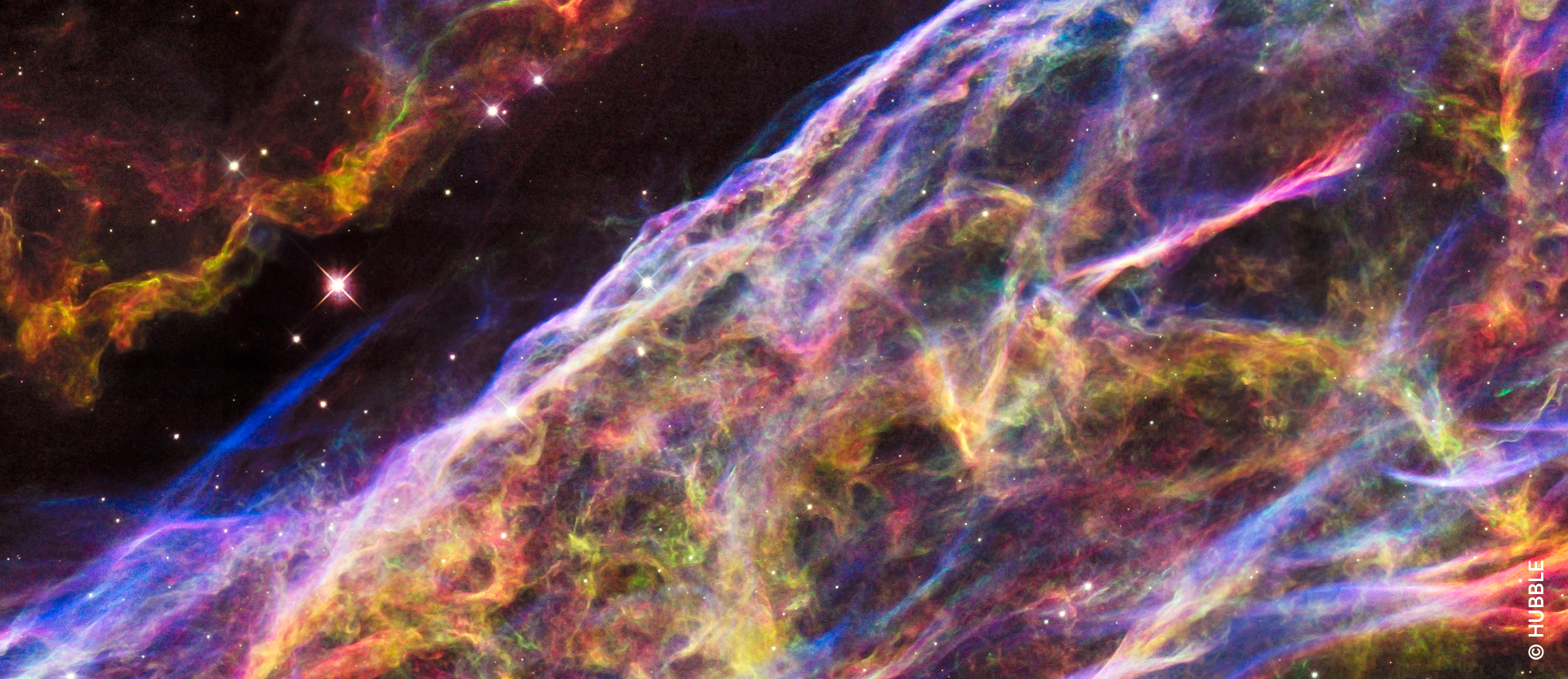The sun: the engine of life

The giant gas balloon whose light enables life on Earth is relatively young. Around eight billion years after the universe came to be, a clustering together of (primarily) hydrogen and helium began. The density of this mass increased continuously, as did its inside temperature. The gas compressed and heated incessantly. Slowly, a protostar emerged. Once the interior of the protostar reached a temperature of several million degrees, the fusion of hydrogen nuclei into helium was sparked. A meltdown began. The protostar released an enormous amount of energy in the form of light and heat: our sun began to shine! Since then, ten million years have gone by. At its core, a temperature of around 15 million degrees Celsius prevails, but its surface, in comparison, is barely 6000 degrees Celsius.
Gigantic events like the birth of our sun are happening constantly in our universe. The Hubble Space Telescope captures the beginnings of such star births almost daily. Original black-and-white images, such as that of the Eagle Nebula, are colored in theatrical colors by experts at the Space Telescope Science Institute in Baltimore, USA, to better show the fascinating beauty of the universe.
And yet, it seems as if we are alone out here. The next sun-like star system, Alpha Centauri, is a good 4.3 billion light years away from us. This distance is almost unimaginably far. Light travels at nearly 300,000 kilometers per second. In a year, it travels 9,460,800,000,000 (i.e. nearly 9.5 trillion) kilometers. By comparison, the sun is about 150 million kilometers away from the earth, and its light takes about eight minutes to reach us.
The sun under observation
Already thousands of years ago, humans began to record what was happening in the sky. A circular bronze plate, called the Nebra sky disk, originated almost 4000 years ago. It shows stars, the moon and – we think – a sunrise and sunset. Today, the disc is considered the world's oldest concrete representation of the sky and its constellations. The sky disc is held at the Halle State Museum of Prehistory in Saxony-Anhalt, Germany.
Much of what we know today about the sun and its innumerable counterparts in the universe we can read directly from their radiation. One of the first scientists to discover this was Joseph von Fraunhofer (1787-1826). In 1814, while conducting research at the Benediktbeuern Monastery, Frauenhofer made his most important discovery: in light, a lot of information is hidden. The physicist realized this when he split white sunlight into its component colors. He noticed dark stripes in some places in the color palette. This in itself wasn’t a breakthrough, because the immovable stripe pattern had already been discovered by the English chemist William Wollaston (1766-1828) – but he could not read it.
Fraunhofer solved that riddle. He realized that these lines are characteristic of sunlight. The eponymous Fraunhofer lines are absorption lines caused by the elimination of certain wavelengths of light through gases that are located in the solar chromosphere. The chromosphere is a layer around the sun that consists mainly of helium and hydrogen, but also contains traces of other elements. Fraunhofer realized that chemical elements in gaseous form, when illuminated from behind by a light source, cast characteristic dark absorption lines in the spectrum of the light source. The gaseous elements block precisely the wavelengths of the light source that they themselves would radiate – if they were hot enough.
With Fraunhofer's discovery it became possible to obtain detailed insight into the distant universe. Every star emits such absorption lines. Depending on the star, they are at different locations, and thus reveal the composition of that star’s atmosphere.
Everything we know about the universe we deduce from the light that reaches the earth. This light comes to us from even the darkest corners of the universe. The “oldest” radiation that astronomers capture today is cosmic background radiation. It dates from a period of around 380,000 years after the Big Bang, which took place around 13.8 billion years ago.













